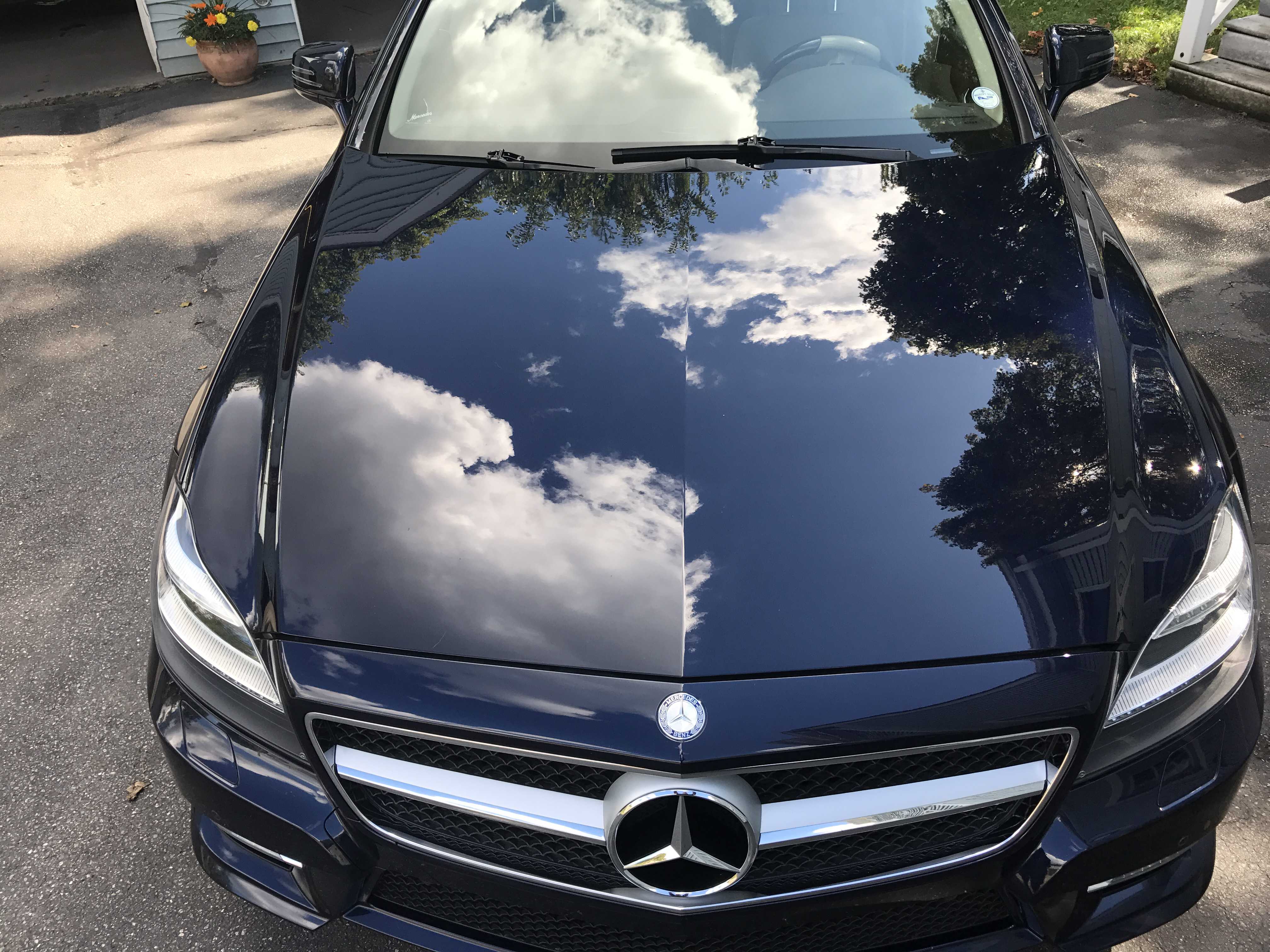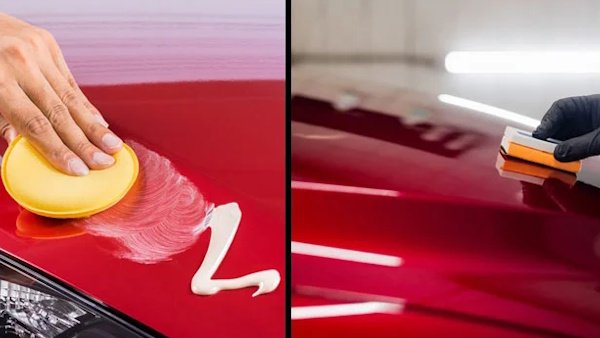Ceramic Coating Newark vs traditional wax — what you should know
Checking out the Scientific Research Behind Car Ceramic Coating and Its Safety Properties
The scientific research of car ceramic coating presents a fascinating research study in advanced automobile protection. Made up largely of silicon dioxide and polymers, these coverings create a durable bond with car paint. This interaction improves resilience against environmental risks while offering hydrophobic advantages. The ins and outs of how these finishes work and their long-lasting advantages remain much less recognized. Ceramic Coating Newark. Unboxing these information exposes why ceramic layers are coming to be a recommended option for car treatment
What Is Ceramic Coating?
Ceramic coating is a liquid polymer that chemically bonds to the surface area of an automobile's paint. This sophisticated protective layer enhances durability and uses superior resistance to environmental factors. Unlike conventional wax or sealants, which give short-lived defense, ceramic finishes produce a resilient guard that can endure rough conditions such as UV rays, acidic contaminants, and severe climate. When used properly, the coating develops a hydrophobic surface area, triggering water to bead and slide off, which aids in preserving the automobile's cleanliness. Furthermore, it uses boosted gloss and deepness to the paint, making the vehicle appear even more polished and vivid. The application process normally entails comprehensive surface preparation, consisting of cleansing and polishing, to guarantee peak bonding. Because of this, ceramic finishings are becoming progressively popular amongst car fanatics and those looking for to shield their financial investments, assuring to preserve the automobile's visual charm while decreasing the regularity of upkeep.
The Composition of Ceramic Coatings
The intricate solution of ceramic coatings primarily contains silicon dioxide (SiO2), which is originated from natural resources like quartz and sand. This key component provides the foundation for the coating's longevity and safety qualities. In addition to SiO2, ceramic layers commonly consist of various polymers and additives that enhance attachment, flexibility, and resistance to environmental factors. These compounds function synergistically to develop a durable obstacle versus pollutants such as dust, chemicals, and UV rays.Furthermore, some formulas incorporate titanium dioxide (TiO2) or other nanomaterials, which can enhance the coating's hydrophobic properties, resulting in improved water repellency. The precise composition can vary substantially amongst producers, influencing performance and longevity. Ultimately, the mix of these aspects finishes in a safety layer that not only enhances the aesthetic allure of lorries yet additionally serves to lengthen their life expectancy by securing the surface area from possible damages.
Exactly How Ceramic Coatings Work
Comprehending exactly how ceramic layers function includes discovering their chemical make-up, which adds to their protective high qualities. The application process is vital for accomplishing excellent outcomes, while longevity and longevity aspects identify the coating's effectiveness gradually. With each other, these aspects highlight the advantages and efficiency of ceramic coverings for automobile defense.
Chemical Structure Explained
While numerous car owners seek durable defense for their vehicles, the chemical composition of ceramic coverings plays an important duty in their efficiency. These coatings mostly contain silicon dioxide (SiO2), which is stemmed from all-natural minerals. This compound creates a strong bond with the automobile's paint, creating a sturdy, protective layer. Additionally, several ceramic finishes contain titanium dioxide (TiO2), boosting their hydrophobic residential properties and resistance to UV rays. The existence of polysiloxanes can better improve flexibility and resilience. Together, these aspects add to the coating's capability to fend off water, dirt, and impurities, while also offering a high-gloss coating. Comprehending this chemical structure aids car proprietors appreciate the robust defense provided by ceramic finishes.
Application Refine Review
Applying ceramic finishings includes a careful process that ensures suitable bonding and protection for the car's surface. Thorough cleansing and purification of the car's outside are done to remove dirt, gunk, and previous waxes. This step verifies that the surface is devoid of impurities that could prevent bond. Following this, the paint is commonly polished to boost clarity and remove any blemishes. Once prepared, the ceramic coating is used in small areas making use of an applicator pad, permitting for uniform insurance coverage. The coating is after that left to cure, creating a solid chemical bond with the surface area. Appropriate curing times and conditions are essential, as they verify the explanation coating achieves its maximum performance and safety qualities.
Durability and Toughness Aspects
Ceramic layers are developed to offer long-lasting security through their innovative chemical composition, which develops a robust obstacle against environmental impurities. The toughness of these coatings is affected by variables such as the density of the application, the quality of the product, and the conditions under which the automobile is revealed. High-quality ceramic finishings can last a number of years, resisting scratches, UV rays, and chemical discolorations. Proper upkeep, consisting of routine washing and periodic reapplication, can additionally enhance durability. Additionally, environmental elements like environment and direct exposure to pollutants can impact the lifespan of the coating. On the whole, when applied and preserved properly, ceramic finishes offer exceptional resilience, making them a prominent option for car lovers seeking to preserve their lorry's appearance.
Hydrophobic Characteristics and Water Repellency
Hydrophobic homes are a hallmark of high quality car ceramic layers, considerably boosting the lorry's surface area efficiency. These finishes create a molecular bond with the car's paint, resulting in a surface area that repels water successfully. When water comes into call with a ceramic-coated surface area, it beads up and rolls off, decreasing the amount of fluid that continues to be on the paint. This actions not only adds to a cosmetically pleasing appearance but also reduces the accumulation of impurities such as dirt, grime, and road salts.The improved water repellency results in less complicated cleaning and upkeep, as much less effort is required to eliminate unwanted click here for more materials. On top of that, the hydrophobic nature of ceramic coatings aids in stopping water places, which can mar the coating of uncoated surface areas. In general, the unification of hydrophobic residential or commercial properties in ceramic coatings plays an essential role in keeping the lorry's pristine look while simplifying maintenance.
Defense Against Scratches and UV Damage
Car ceramic coatings use substantial protection against scrapes and UV damage. The scrape resistance mechanism produces a resilient layer that takes in effects, while the UV securing benefits assist maintain the vehicle's paint stability over time. Together, these attributes add to a longer-lasting and aesthetically appealing finish.
Damage Resistance Device
Making use of innovative modern technology, ceramic layers provide a robust guard versus scrapes and UV look these up damages, enhancing the long life and look of automobile surfaces. The scrape resistance device of these layers is credited to their special molecular framework, which creates a sturdy bond with the lorry's paint. This bond creates a hard, safety layer that can absorb influences and withstand abrasions. Furthermore, the smooth surface of the coating lowers friction, making it hard for contaminants to adhere and trigger scratches. The chemical make-up of ceramic coatings often consists of nanoparticles that strengthen the protective layer, more enhancing its strength. As a result, automobiles treated with ceramic finishings exhibit noticeably enhanced scratch resistance compared to typical wax or sealants, guaranteeing a pristine surface with time.
UV Protecting Perks
The safety high qualities of ceramic coatings prolong beyond scrape resistance to include significant UV securing benefits. These coverings create a durable barrier that reflects dangerous ultraviolet rays, safeguarding the lorry's paint and underlying products. Extended exposure to UV radiation can result in fading, oxidation, and damage of the paint coating. By incorporating ceramic finishings, car owners can properly mitigate these dangers, preserving the visual allure and stability of their cars and trucks. Additionally, the UV obstructing residential or commercial properties add to improved longevity, reducing the regularity of painting and upkeep. Inevitably, the combination of ceramic layers supplies an extensive option for shielding automobiles from the damaging impacts of sun direct exposure, guaranteeing a continual, vibrant appearance gradually.
The Durability and Upkeep of Ceramic Coatings

Often Asked Questions
Can Ceramic Coating Be Applied to Any Kind Of Kind of Vehicle?
Ceramic coating can be put on various kinds of lorries, consisting of autos, vehicles, and bikes. Surface area preparation and compatibility with particular products are crucial for suitable bond and effectiveness of the coating.
Just How Much Does Ceramic Coating Typically Expense?
Ceramic coating usually costs between $500 and $2,000, depending upon factors such as car size, coating high quality, and professional application. The financial investment can provide resilient security and boost the lorry's appearance over time.

Is Professional Application Required for Ideal Results?
The necessity of specialist application commonly depends on desired results. Experts generally ensure proper surface area preparation and application strategies, bring about suitable bonding and longevity of the coating, which might be testing for unskilled people to accomplish.
Can Porcelain Coatings Be Eliminated or Fixed?
Ceramic finishes can be eliminated or repaired, though the procedure may call for certain solvents or techniques - Ceramic Coating Newark. Appropriate removal is vital to stay clear of damage to the underlying surface area, emphasizing the relevance of professional support for suitable results
Just How Does Porcelain Coating Compare to Standard Wax?
The contrast between ceramic coating and standard wax reveals that ceramic coverings use remarkable durability, improved defense against environmental pollutants, and longer-lasting luster, while wax calls for extra constant application and supplies much less general resistance to damage.